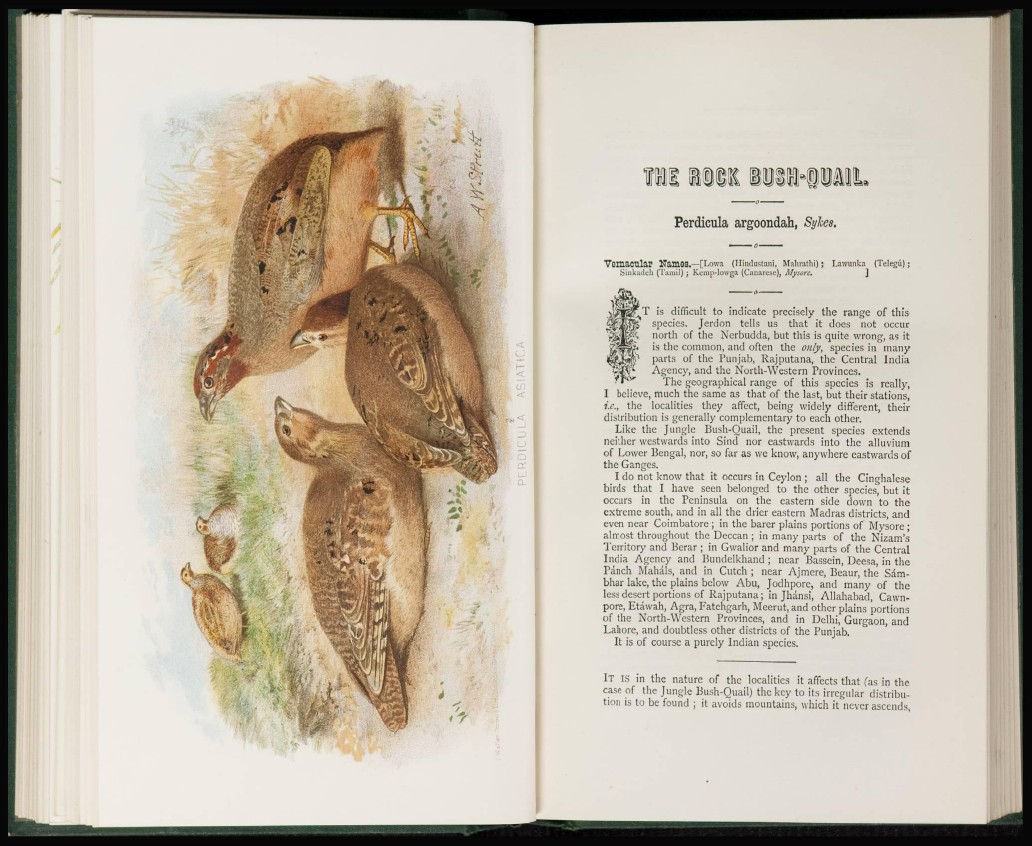
Perdicula argoondah, Sgkes.
Vernacular Names.—[Lowa (Hindustani, Mahralhi); Lawunka (Telegii);
Sinkadeh (Tamil) ; Kemp-lowga (Canarese), Mysore.
r T is difficult to indicate precisely the range of this
1 species. Jcrdon tells us that it does not occur
north of the Ncrbudda, but this is quite wrong, as it
is the common, and often the only, species in many
parts of the Punjab, Rajputana, the Central India
Agency, and the North-Western Provinces.
The geographical range of this species is really,
I believe, much the same as that of the last, but their stations,
i.e., the localities they affect, being widely different, their
distribution is generally complementary to each other.
Like the Jungle Bush-Quail, the present species extends
neither westwards into Sind nor eastwards into the alluvium
of Lower Bengal, nor, so far as we know, anywhere eastwards of
the Ganges.
I do not know that it occurs in Ceylon ; all the Cinghalese
birds that I have seen belonged to the other species, but it
occurs in the Peninsula on the eastern side down to the
extreme south, and in all the drier eastern Madras districts, and
even near Coimbatore ; in the barer plains portions of Mysore ;
almost throughout the Deccan ; in many parts of the Nizam's
Territory and Berar ; in Gwalior and many parts of the Central
India Agency and Bundclkhand ; near Bassein, Deesa, in the
Panch Mahals, and in Cutch ; near Ajmcre, Beaur, the Sdmbhar
lake, the plains below Abu, Jodhpore, and many of the
less desert portions of Rajputana; in Jhansi, Allahabad, Cawnpore,
Etawah, Agra, Fatehgarh, Meerut, and other plains portions
of the North-Western Provinces, and in Delhi, Gurgaon, and
Lahore, and doubtless other districts of the Punjab.
It is of course a purely Indian species.
IT IS in the nature of the localities it affects that fas in the
case of the Jungle Bush-Quail) the key to its irregular distribution
is to be found ; it avoids mountains, which it never ascends,